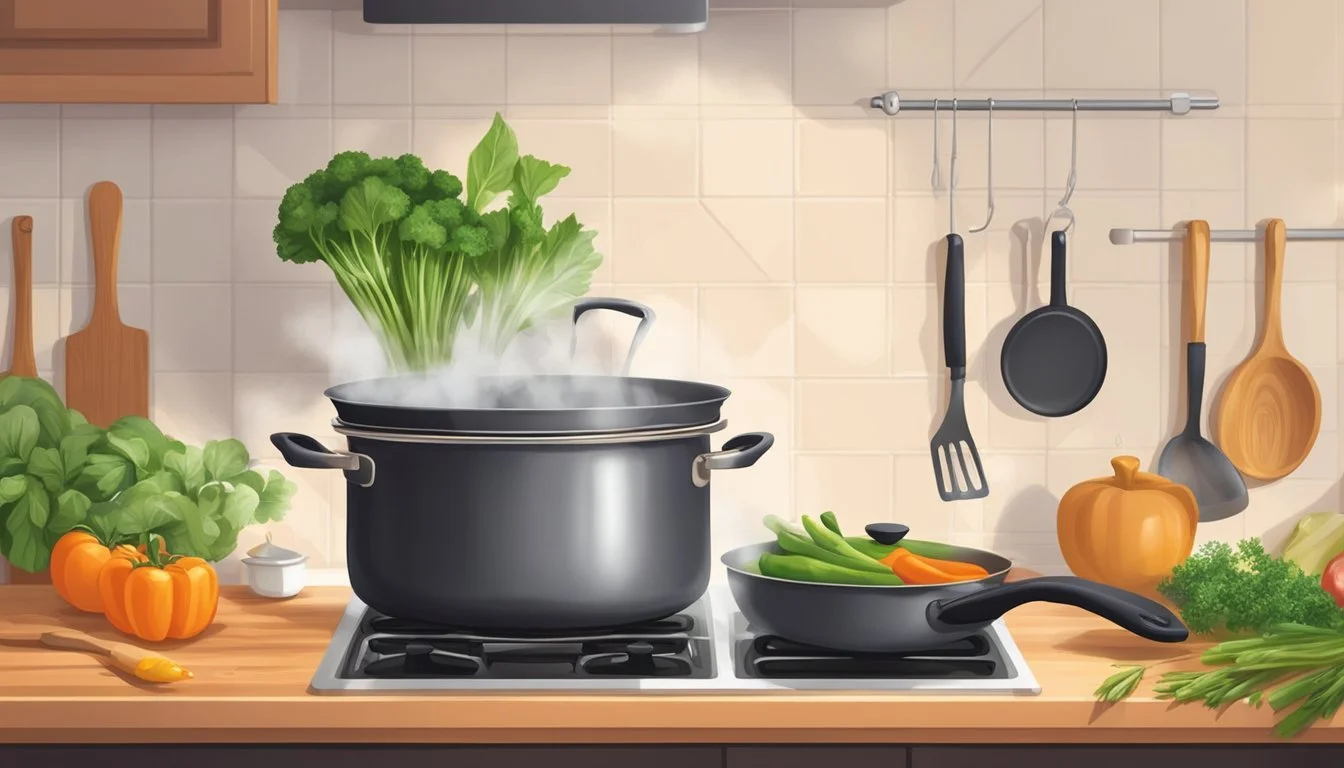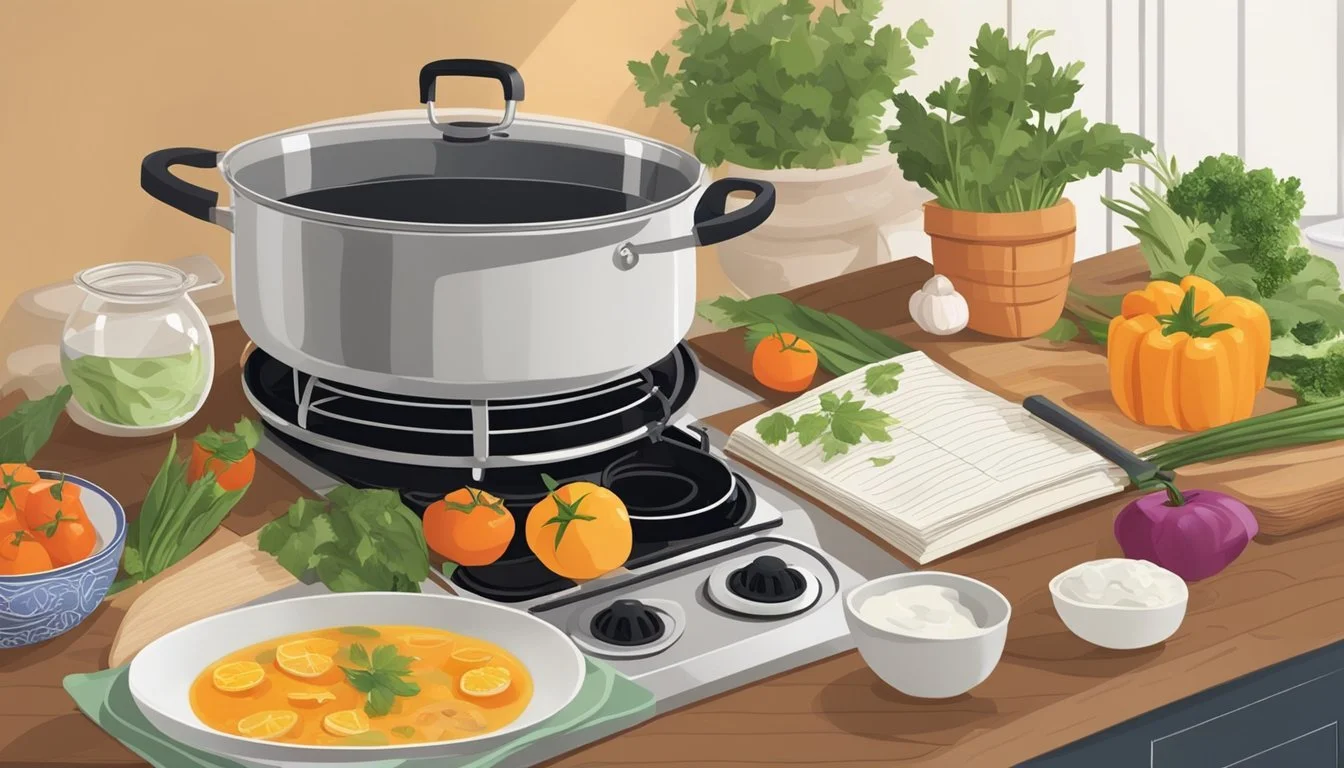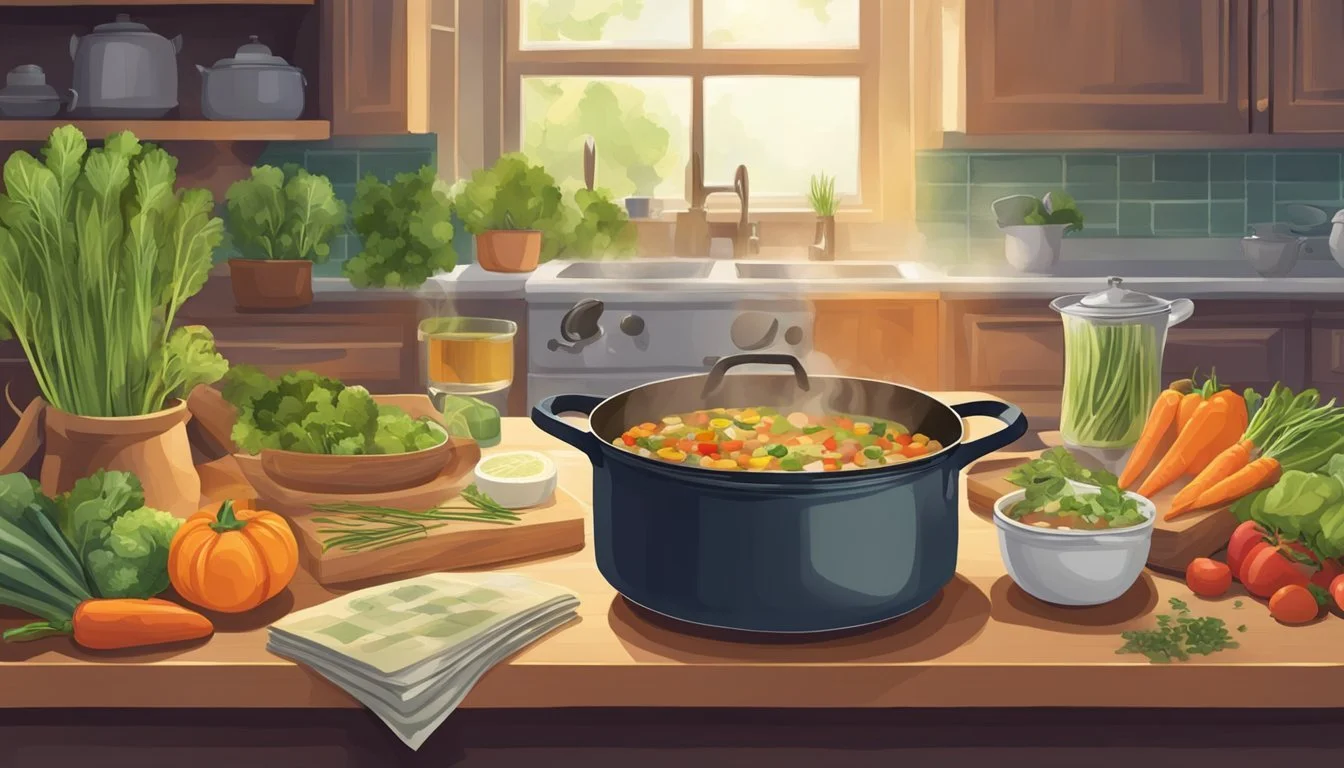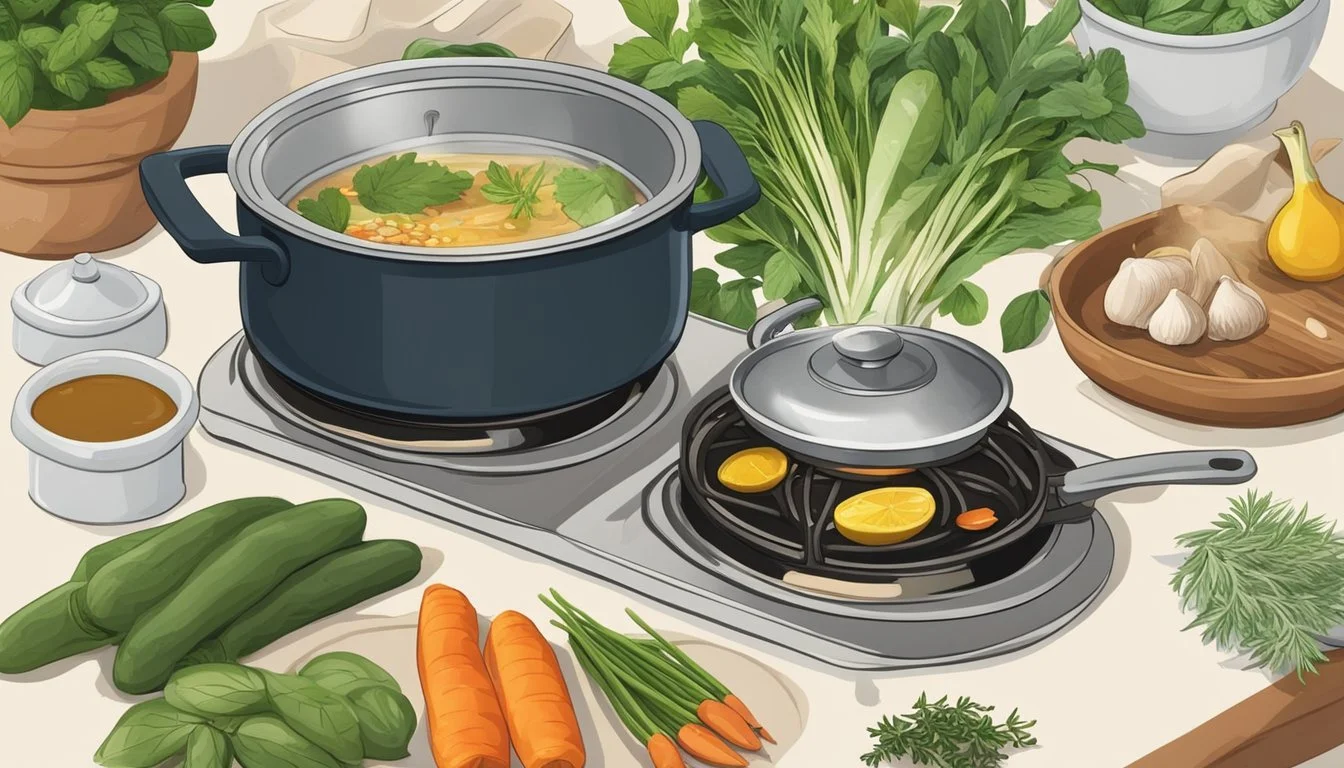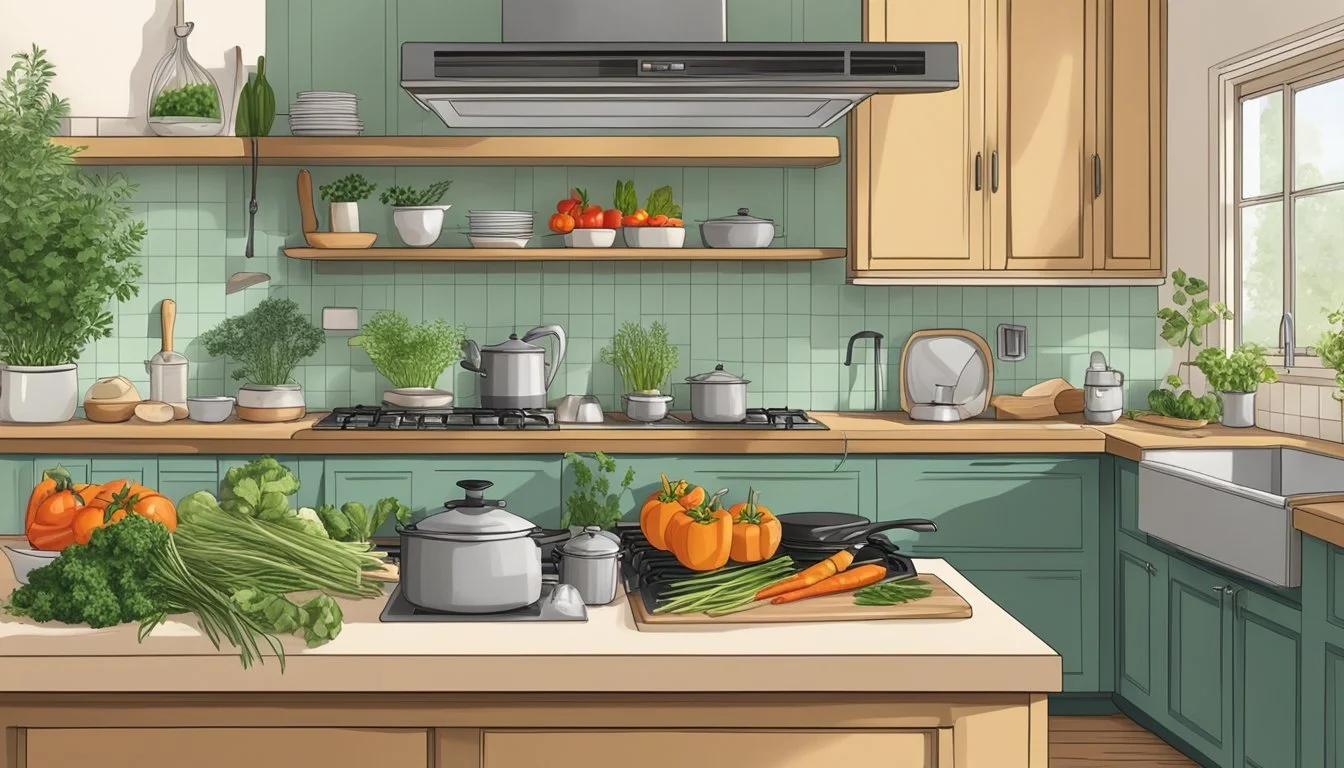How to Cook When You're Trying to Heal Emotional Wounds
Nourishing Your Body and Soul
Cooking can serve as a therapeutic tool that aids in the process of emotional healing. When individuals face emotional challenges, engaging in the art of preparing meals can offer a structured activity that provides both a sense of normalcy and an opportunity for creativity. The act of cooking requires focus and presence, which can help divert the mind from distressing thoughts and anchor it in the present moment. By following recipes or even innovating with ingredients, individuals may regain a feeling of control and accomplishment that emotional wounds often erode.
The kitchen becomes a place of support through the ritual of creating nourishment for oneself and others. As they measure, chop, and simmer, individuals not only attend to their physical needs but also foster their emotional well-being. In the process, they often develop greater self-compassion and patience, recognizing that, much like cooking, healing is not instantaneous. Taking it one step at a time, choosing recipes that resonate with personal taste and comfort, individuals can use the culinary arts to support their journey towards emotional recovery. Cooking thus transforms into more than just a daily task; it becomes an act of self-care and a subtle path to healing.
Understanding Emotional Wounds
Emotional wounds are the lasting feelings of pain stemming from psychological trauma. These wounds are often the result of traumatic experiences that have a significant impact on an individual's emotional well-being.
Identifying the Cause
The cause of emotional wounds can vary greatly from person to person. Identifying the root cause is a critical step in the healing process. Common sources of emotional wounds include:
Trauma: Events that cause severe psychological distress such as violence or disasters.
Loss: The grief associated with losing a loved one or significant life changes.
Abuse: Emotional, physical, or sexual harm that results in long-term psychological impact.
Betrayal: The breach of trust from significant relationships causing feelings of hurt and deception.
Shame: Intense feelings of humiliation and distress, often tied to deeply personal experiences.
Recognizing Symptoms
Recognizing the symptoms of emotional wounds is essential for seeking appropriate support and beginning the healing process. Symptoms can manifest in various ways, including:
Depression: Persistent sadness, loss of interest in activities, or feelings of hopelessness.
Anxiety: Chronic feelings of worry, nervousness, or fear about the future or about specific situations.
Flashbacks: Re-experiencing traumatic events through intrusive and vivid memories.
Avoidance: Steering clear of people, places, or activities that are reminders of past trauma.
Physical Symptoms: Experiencing physical pain, sleeping issues, or changes in appetite connected to emotional distress.
By understanding the origins and symptoms of emotional wounds, individuals can take the first steps towards healing and regaining emotional stability.
Embracing the Healing Process
Cooking can be a therapeutic part of the healing process, providing a sense of control and the space to care for oneself. In embracing this healing journey, it is crucial to accept the reality of one's emotions and to approach recovery with patience and self-compassion.
Accepting the Reality
The first step in healing from emotional wounds is to recognize and trust one's own feelings of pain and grief. It is essential to set aside time to accept yourself and the reality of the situation—a practice which requires both courage and the establishment of realistic expectations. This acceptance does not suggest resignation but rather an acknowledgment that gives way to the possibility of healing.
Stages of Emotional Healing
Acknowledge the pain.
Grant yourself permission to feel and express grief.
Developing Patience and Self-Compassion
Healing is not instantaneous but a process that unfolds over time with patience and persistence. Cooking can serve as a self-care activity that encourages patience as one waits for a dish to come together, mirroring the incremental steps in recovery. Cultivating self-compassion means treating oneself with the same care and understanding one would offer a friend.
Self-Care Practices
Invest energy in preparing nourishing meals.
Establish boundaries that prioritize personal well-being.
By persistently nurturing self-love and maintaining boundaries, individuals support their own recovery, slowly transforming pain into growth and resilience.
Tools for Emotional Healing
Healing emotional wounds requires a multipronged approach combining external support and personal strategies. These tools are designed to assist individuals in nurturing their heart, bolstering self-esteem, and fostering a positive outlook throughout the healing process.
Establishing Support Systems
A robust support system can be crucial to healing emotional wounds. Engaging with a therapist provides a structured environment for individuals to explore and address their emotional scars. This therapeutic relationship can offer validation and expert guidance. Additionally, establishing emotional support through friends and family members creates a network of care and encouragement, helping individuals to feel understood and less isolated.
Therapeutic Practices
Incorporating therapeutic practices into one's routine can significantly enhance emotional healing. Mindfulness and meditation, including guided meditation, serve as effective tools to calm the mind and regulate emotions. The use of a mantra during meditation can reinforce healing intentions. Furthermore, practices such as yoga and focused breathing exercises promote a connection between mind and body, supporting overall well-being.
Self-Help Strategies
Personal strategies play an important role in healing from emotional trauma. Maintaining a journal provides an outlet for expressing thoughts and tracking progress. This reflection can reveal patterns and triggers, allowing for strategic changes and growth. Encouraging a positive outlook is vital; individuals should remind themselves of their worth and capabilities, reinforcing self-esteem. Simple techniques, such as repeating positive affirmations and engaging in activities that bring joy, can create a positive feedback loop, aiding in the healing of emotional wounds.
Navigating Relationships During Healing
During the healing process from emotional trauma, individuals must navigate their relationships with care, ensuring they establish a framework that fosters recovery. This involves setting healthy boundaries and building a network of trust and support that validates their experiences and emotions.
Setting Healthy Boundaries
When an individual is healing from emotional wounds, defining personal limits is essential. Healthy boundaries serve as a necessary form of protection against potential overwhelm and rejection. For instance, they may need to communicate their need for solitude or limit interactions that trigger stress or discomfort. It's important that they convey their boundaries to family and friends with clarity to establish a safe emotional space.
Communicate Needs Clearly: "I need some time to myself to process my emotions."
Reinforce Boundaries: Politely remind others if they encroach on their space.
Building Trust and Support
Trust is a cornerstone of any healthy relationship, especially when one is recovering from past hurts. Someone with trust issues may find it challenging to open up and rely on others out of fear of further pain. They should carefully choose a support system—family, friends, or a professional therapist—that respects their values and offers the validation needed for healing.
Identify Trustworthy Individuals: Look for consistent, reliable behavior in others.
Seek Support: Reach out to those who have proven to be understanding and supportive in the past.
Cultivating these areas in the context of relationships can significantly ease the journey towards healing from emotional trauma.
Overcoming Specific Challenges
Cooking can serve as a therapeutic process in the journey toward healing emotional wounds. Yet, anyone navigating this path may face specific hurdles, such as setbacks and the profound impact of grief. Embracing these challenges with confidence can make the difference between nurturing the mind and spirit and feeling stuck in a cycle of despair.
Dealing with Setbacks and Imperfections
Setbacks and imperfections are inherent to both cooking and the healing process. Accepting that not every dish will turn out as expected, just as not every day will feel like a step forward, is key. Individuals may often feel broken hearted or as if they are too old to change, but healing requires patience and self-awareness. To stay on track, maintaining focus on the present moment can help release feelings of undeservingness or imperfection. Phrases to remind oneself might include:
"Every attempt is a step toward becoming whole."
"Imperfections are part of the process, not failures."
A simple strategy can involve creating a checklist or journal to note down:
Setbacks encountered in the kitchen.
The lessons learned from each experience.
A plan to address similar situations in the future.
Addressing setbacks in this way can help to alleviate the weight of perfectionism and open up space for healing and gradual progress.
Handling Grief and Loss
The loss of a loved one through death, divorce, or breakup can leave a profound wound, manifesting as a crisis of identity or feelings of being helpless. Cooking during these times can become a way to honor memories and cope with sadness. It's important to acknowledge these feelings without judgment and allow oneself to experience them fully. Strategies to manage grief in the kitchen may include:
Preparing a dish that reminds them of the person they've lost.
Allowing each step in the cooking process to serve as a moment to reflect and heal.
A table may be used to help those in grief navigate their journey in the kitchen:
Stage of Grief Kitchen Activity Intended Benefit Denial Organizing ingredients Grounding in reality Anger Kneading dough Physical release of emotion Bargaining Experimenting with recipes Focus on control and outcomes Depression Cooking comfort foods Nurturance and self-care Acceptance Sharing a meal Connecting with others
By translating stages of grieving into kitchen activities, individuals might find a structured way to navigate their emotional healing. It is an approach to embracing the sudden shifts in emotional states, marking a step toward feeling whole after experiencing loss.
Maintaining a Positive Outlook
When someone is healing from emotional wounds, developing a consistent positive outlook is essential for recovery. It fuels the energy needed for the healing process and encourages a constructive frame of mind.
Fostering a Sense of Inner Peace
To build a sense of inner peace, one should focus on integrating activities that promote a tranquil spirit. The inclusion of iron-rich foods which contribute to overall energy levels can act as a foundation for stability. A peaceful spirit is akin to having a wise coach within, guiding one through the healing journey. Embracing a philosophy of taking life "one day at a time" aids in creating a whole and safe mental environment which is conducive to inner peace. This approach encourages individuals to remain persistent without feeling overwhelmed by their progress.
Cultivating Mindfulness and Presence
Mindfulness and presence in the kitchen can be transformative. By paying close attention to the act of preparing food—chopping vegetables, stirring a pot, or smelling herbs—they allow their minds to focus on the present moment. This practice can divert attention from negative thoughts and bring about a state of calm. One's inner child may find joy in these simple acts, strengthening a positive outlook. It is an exercise in being present and a step towards mindful living, which in turn fosters mental clarity.
Individuals are encouraged to harness these methods to cultivate a healing atmosphere that not only benefits emotional well-being but also enhances the overall cooking experience.
Looking Forward
Cooking can play a pivotal role in the journey of emotional healing as it invites patience, self-care, and mindfulness into daily routines—a practice where the act of creating nourishment is both symbolic and practical in mending emotional wounds.
Embracing Micro-Changes
One of the keys to progressing in the healing process is the integration of micro-changes into one's lifestyle. These small, manageable shifts in behavior and mindset can build resilience and a positive outlook. For someone dealing with emotional pain—be it from rejection, a broken heart, or deep-seated traumas from their origin or parents—beginning with simple tasks like cooking can foster a sense of accomplishment and a nurturing form of self-care.
Cook with intention, focusing on each step as a form of mindfulness.
Allow rest in between tasks to not overwhelm the mind or energy.
Building a Future with Self-Awareness
On the path to recovery, becoming self-aware plays a significant role in ensuring the emotional state is acknowledged and tended to with compassion. While looking forward to a future of healing, trusting a process tailored to individual needs becomes crucial. Using strategies that involve meditation and mindfulness while cooking can serve as daily reinforcement of one’s presence in the present moment, helping to develop a self-compassionate approach to life's challenges.
Keep track of changes in your emotional state as you engage in cooking, noting patterns that could inform your recovery strategy.
Regular consultations with a psychotherapist may offer guidance on maintaining realistic expectations and developing a routine of self-love.
By implementing these strategies, one can gradually nurture their emotional scars into self-acceptance and move forward with confidence and care.
Conclusion
Cooking can serve as a therapeutic process for individuals on their journey to emotional healing. The rhythmic nature of chopping, sautéing, and stirring can provide a sense of calm and enable a person to focus on the present moment, fostering mindfulness. During the healing process, it's essential to consider the act of cooking as not just preparing food but as a nurturing self-care practice that offers both physical and emotional sustenance.
Those in search of emotional healing may find solace in the kitchen. The preparation of a meal becomes a structured activity that can deliver a sense of competence and completion. Additionally, sharing meals can open up avenues for support from friends and family, as dining together encourages connection and conversation.
Key Considerations:
Approach cooking as a mindful practice.
Allow the process to be a supportive part of emotional healing.
Use mealtime to connect with others and seek mutual support.
In summary, cooking is more than sustenance; it is a valuable tool in the repertoire of strategies for emotional healing. Through the creation and sharing of meals, individuals engage in an act of self-care and can strengthen their support systems, laying the groundwork for resilience and recovery.

